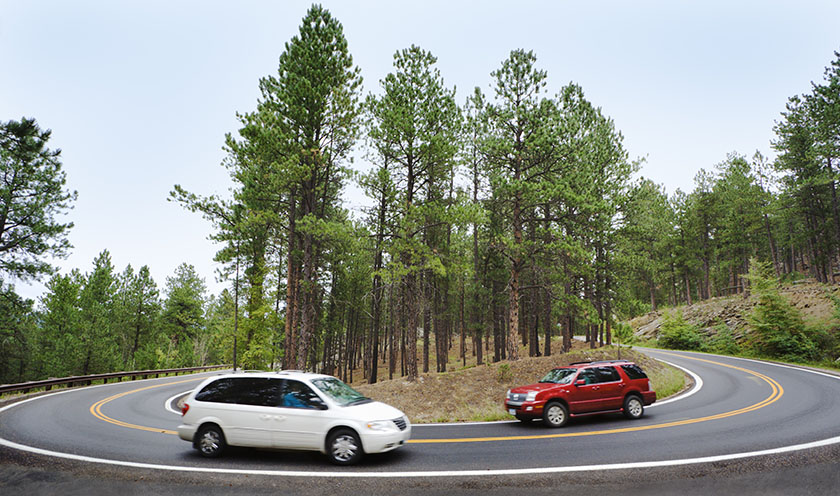Ask an Arity expert: Auto insurance and telematics trends in 2025 Read article


Do you know how safe your driving is? Most Americans don’t — and this knowledge gap is contributing to a dangerous driving crisis in our country.
The numbers don’t look good. Traffic fatalities are up 30% compared to a decade ago, even though crash prevention technology has improved. The trend is so pronounced and widespread, it has major news outlets characterizing American drivers as “deadly.”
So, why has driving gotten so dangerous?
A recent survey of U.S. drivers by Arity uncovered one likely reason behind this worrisome trend: a lack of consumer understanding about which driving behaviors most commonly lead to accidents. Our study found that drivers consistently underestimated the riskiness of actions that are highly correlated with crashes, like not using turn signals, hard braking, and speeding.
According to our research, eight in 10 U.S. drivers believe improving driving safety is the individual driver’s responsibility. So, why aren’t more drivers taking action to educate themselves? The answer may be that they simply don’t see themselves as part of the problem.
Beyond the occasional honked horn or speeding ticket, most adult drivers don’t receive much feedback about how they’re driving. Unsurprisingly, they also tend to overestimate their own skills. One survey found 80% of drivers think their driving is above-average — a statistical impossibility.
Combine an overestimation of personal driving skills with an underestimation of the risks associated with dangerous driving behaviors — along with a lack of access to data highlighting these dangers — and you have a recipe for disaster.
For example, in our survey, less than half of U.S. drivers (42%) said it was “extremely unsafe” to speed, even though speeding makes accidents more likely and more severe. Just three in 10 respondents said the same about not using turn signals (34%) and hard braking (38%).
Age doesn’t exempt you from responsibility to refresh your driving skills. While drivers under 25 have the highest rates of auto accidents per capita, drivers who have aged out of this high-risk category aren’t spared from bad safety habits.
Many middle-aged or senior drivers haven’t refreshed their skills in years and may have become increasingly set in their driving habits — both good and bad. In other words, drivers of all ages could use more education.
It’s not feasible to send every driver in the country back to driver’s ed to relearn which behaviors are risky and how to correct their driving behaviors accordingly.
But if you’re like me and want to make a difference in driving safety, you have a powerful educational tool in your hands (one that doesn’t require stepping into a classroom). It’s your own driving data, and it offers a clear picture of your behaviors on the road and what you can do to contribute to a safer driving future for America — a future with zero fatalities.
These trends point to an uncomfortable truth in America: Many drivers may not understand how risky their own behaviors are, or how close they come to causing accidents every time they get behind the wheel.
While the majority of drivers in our survey agreed that improving driver’s ed would make the biggest impact on road safety, expanded education is difficult to implement on a national scale. And in the time it would take to update and expand driver’s ed, many more Americans will find themselves in dangerous, or even deadly, driving situations.
Fortunately, thanks to modern technology and driving data resources, each of us already has the tools we need to help make our roads safer and empower individual drivers. It’s up to you to take the wheel and help drive America toward a safer future.
86% of U.S. drivers would be more willing to share their driving behavior data if they knew it could help save lives.
Your everyday activities constantly generate data, from the posts you engage with on social media apps to the products you add to your cart when shopping online. Most of this information is used to personalize content and experiences for you when you choose to allow it.
For example, you might permit a streaming media platform to use data on your viewing habits to tailor content recommendations to your preferences. Or you might allow a retailer you shop with often to use your mobile data to highlight deals or specials in your vicinity.
You can also choose to use some of the data you generate to help you become a safer driver. There are several driving data sources you can explore, each of which offers unique insights into your habits and patterns on the road.
For example, if you have a newer car or truck, the manufacturer might have connected vehicle systems already built in. These tools offer insight into when you have a close call, begin to veer out of your lane, follow another vehicle too closely or exhibit other driving red flags.
You could also choose to join your insurer’s safe driving program, which usually involves downloading an app on your mobile phone. You’ll gain visibility into how often you perform risky behaviors like speeding and hard braking — and if you avoid them, you could lower your insurance premiums. Some mobile apps, such as family safety apps, may also provide driving insights to users.
Besides gaining visibility into your own driving, participating in these programs can also serve a larger social purpose by harnessing the power of your driving data to reduce accidents on our roads.
It’s a concept that resonates with most drivers. In fact, 86% of U.S. drivers would be more willing to share their driving behavior data if they knew it could help save lives. In addition, 40% of U.S. drivers said increasing the use of driving data to identify high-risk areas/behaviors and make better decisions about safety interventions would make the greatest impact on road safety.
But what many of these same drivers may not know is that they already have the opportunity to be a part of this effort if they take the right steps.
Awareness of your driving behavior data is a valuable tool that offers you the choice to take better control of your safety on the road, just like a credit score can help you take control of your financial well-being.
Institutions from local governments to insurance companies should continue working to make driving data more accessible to consumers, especially as the dangerous driving crisis in America deepens.
In the meantime, we have to do our best to look out for one another, and that starts with knowing what driving data we have access to — and then making use of it.